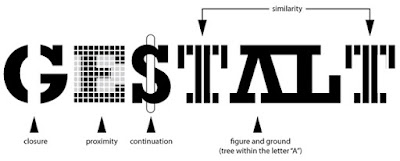Summary
The purpose of the Gestalt Principles, created by Max Wertheimer, Wolfgang Kohler, and Kurt Koffka, is to make a design feel more complete and connected. The six principles are similarity, continuation, closure, proximity, figure/ground, and symmetry and order.Six Principles
1. Similarity
2. Continuation
Continuation Article
Continuation Article
3. Closure
4. Proximity
5. Figure/Ground
6. Symmetry and Order
Author's Argument
The author of this article argues that Rudolf Arnheim's book, Art and Visual Perception: A Psychology of the Creative Eye, is the reason the principles became well known, and claimed that the book is a "must-have" and is worth reading.The author does a fantastic job explaining all of the principles and providing examples. However, the author doesn't explain how the principles were created. The author concludes that the principles are very important to design and should be utilized to make designs feel more complete and coherent.
Critique
The author's argument only supports the main points a little bit. His main argument is about Arnheim's book, but the main points of the article are the six basic principles and what effects they create in a design. The author uses very strong examples to illustrate the principles and does a good job explaining the purpose and effects of using the principles. These principles are very important for graphic designers to integrate into their projects. These principles create unity and make designs look more complete.

No comments:
Post a Comment